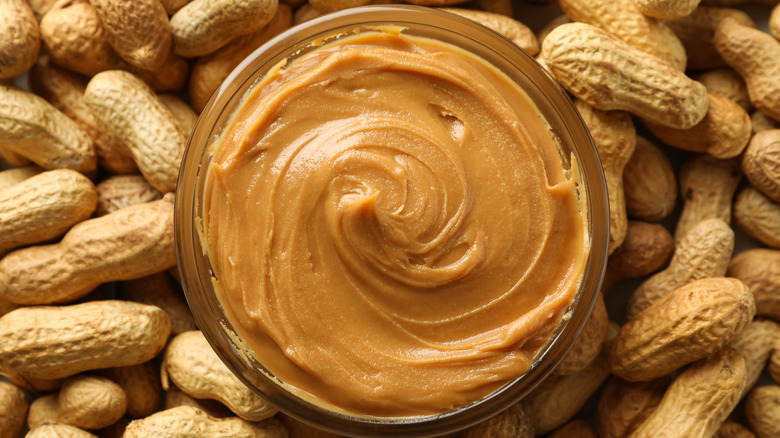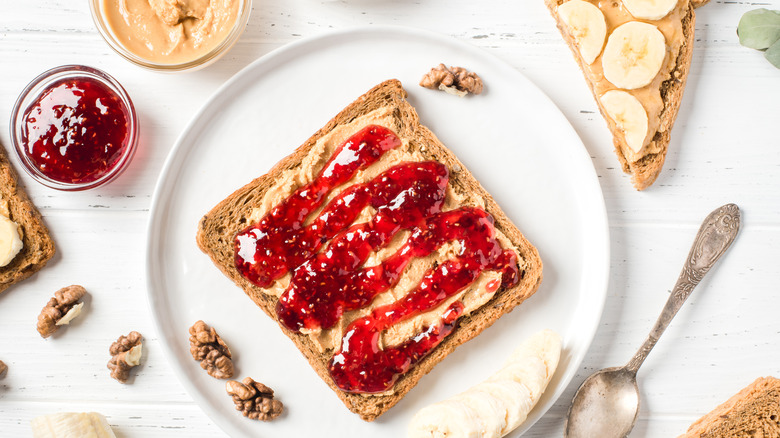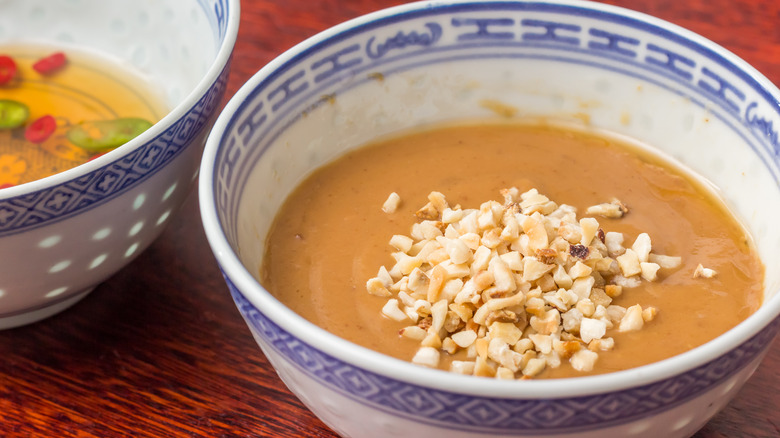The U.S. Law That Dictates What Peanut Butter Really Means
Few things are more deeply American than peanut butter. With more brands of this jarred spread than ever before on the shelf, it's clear that Americans have been nuts about peanut butter for as long as many of us can remember. According to Slate, peanut butter became a staple in the American diet during World War II, when the country was experiencing a meat shortage.
Just like all popular things, Americans often disagree over which brand of peanut butter is truly the best. With similar deep-rooted feelings regarding the Coke versus Pepsi debate, the Jif versus Skippy showdown continues to divide our country.
We're not here to throw shade at peanut butter or ruin your day, but have you ever looked closely at the label on your favorite peanut butter? You may be surprised to see the word "spread" printed in small letters there. But what exactly does that mean?
The definition of peanut butter spread
The U.S. Food and Drug Administration makes many laws regarding food quality standards and ingredients. It's even established a law regarding what can be considered peanut butter! To qualify as true peanut butter, the product in question must be made up of a minimum of 90% ground peanuts to meet the standard, per Cornell University's Legal Information Institute. That means no more than 10% of the product can be added ingredients like sugar or other stabilizers. Anything outside that definition gets labeled as "spread," according to the National Peanut Board.
Sugar is a popular additive to nearly all of your favorite peanut butter brands, as seen by labels of your preferred peanut butter, like Jif. If you're looking to cut back on added sugars or hydrogenated oils, you can easily make peanut butter at home and you only need one (or two) ingredients. With just some peanuts and a touch of salt that have been blended into a smooth paste, you're on your way to a gourmet PB&J or some highly coveted peanut butter cookies.
When it comes to your typical 12-ounce container of peanut butter from the local store, it takes 540 peanuts to make one jar, according to the National Peanut Board. According to the board, the average American eats close to 3,000 peanut butter and jelly sandwiches throughout their lifetime. Of course, that exact number depends on the individuals, but we could see that number being much higher for dedicated PB&J fans.
What else can you do with peanut butter?
Now that you know to check the label on your go-to peanut butter, you might be curious to know what else you can do with that creamy, salty, and slightly sweet spread. Other than the obvious sandwiches and cookies, peanut butter goes great in smoothies, pies, and even some savory dishes. You've probably had spring rolls that come with peanut sauce, and you'll be pleased to learn that you can make your own peanut sauce with just a few ingredients. With a bit of mixing, you'll soon be on your way to a fresh and tasty dipping sauce or salad dressing.
Food options aside, you're probably also familiar with peanut butter as a magical gum remover. That's because the naturally occurring oils in peanut butter help to break down the gum stuck in your hair or carpet, per Tasting Table. Just be sure you're using a well-mixed natural peanut butter or an already homogeneous mix so you don't end up with an oil stain in place of the gum. Whether your peanut butter of choice is Jif, Skippy, or an all-natural blend, you can rest easy knowing that peanut butter is a versatile and delicious part of your pantry.


